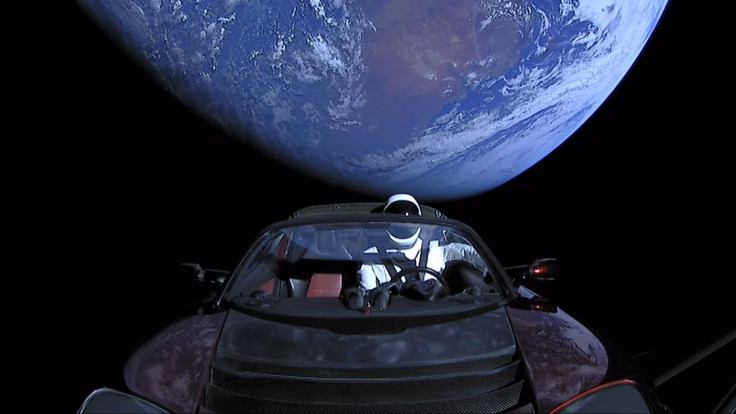Space 2.0: A New Age Of Space Exploration And Business Opportunities

On Feb. 6, 2018, Elon Musk’s SpaceX launched its Falcon Heavy rocket on its maiden flight. The booster performed almost perfectly (the center core, one of three, was not recovered), launching on-time and achieving all its objectives. This kind of performance is rare in the space business, and almost unheard of on a first try. It was the opening act of a new space age, and was funded entirely by a single wealthy and highly motivated individual.
We might call this new era space 2.0, successor to space 1.0, the first space age that lasted roughly from 1957 through 2000. The differentiating factor between the two is business. The first space age was born of competition between the United States and the erstwhile Soviet Union for geopolitical influence, and while some of that lingers still in the United States’ competition with China, this new space age is increasingly about commercial interest — and that’s a good thing.
While national pride and the quest for greater knowledge about our solar system and the universe are laudable goals, it has been progressively more difficult to fund spaceflight on these merits alone. NASA’s activities are one example; while flying many more science missions than in the 1960s, the agency’s budget is about one-tenth of what it was at the height of the space race in 1965 in adjusted dollars, currently about $19 billion. Then, the singular focus was putting humans on the moon. Today, we have a vast orbiting network of research, telecommunication and weather satellites, planetary probes, and the International Space Station, all competing for limited funding. Though these programs return vast benefits in terms of government spending in the private sector and stimulus to STEM-related education and more, they are not inherently profitable. Space 2.0, however, will be.
We are already seeing the extended commercial benefits of space 1.0. GPS satellites efficiently guide cars, trucks and seagoing vessels to destinations all over the globe every minute of the day, resulting in increased efficiency and profits. Other satellites provide visual information critical to vehicle fleet tracking, resource identification for mining, and the optimization of farming and agriculture. Weather prediction and climate change dynamics are all created from orbital data. Cell phones depend on GPS satellites for location services, emergency calls, and switching. Global banking, right down to ATM transactions, also depend on GPS signals to operate. All these areas of commerce have generated profits for companies both large and small.

Space 2.0 has pivoted nimbly from these earlier investments, and newspace businesses have grown aggressively. Companies like Planet Labs created a large constellation of small, inexpensive imaging satellites built with many off-the-shelf components that image the Earth 24 hours per day. These images — which are near-real-time and are updated frequently — are sold at a hefty profit and have become critical to the activities of major corporations. In a similar fashion, companies like SpaceX and OneWeb will soon launch thousands of small, inexpensive broadband satellites, which will provide global services and produce enormous dividends to their stakeholders.
Getting to space is becoming cheaper, too. Advances in technology have allowed more efficient and miniaturized space-rated components to become available at ever-lower prices, resulting in cost-effective spacecraft that are lighter and therefore cheaper to launch. Dozens of smallsats can also be sent as secondary payloads on government-sponsored launches, for example, at vastly reduced cost. In addition, investments in these products are allowing companies like Planet Labs to field an increasingly wide array of products into space, with other entrepreneurs following suit. Last year alone, $3-4 billion were funneled into U.S. commercial space operations, mostly from private investors.
Ultimately, the future of space exploration and utilization lies in intelligent cooperation between NASA, the private sector, and international space agencies. This is the “sweet spot” of space 2.0 — allowing each entity to do what it does best.
On the exploration side, NASA will continue to lead the way by setting large national goals, relying on commercial providers such as SpaceX, Blue Origin and United Launch Alliance to provide the hardware and services for routine flights to Earth orbit and beyond to the Moon at fixed pricing. International partners, both national space agencies and private companies, will begin to compete to provide similar services.
With regard to the utilization of space, commercial opportunities should open up significantly. There are enormous reserves of resources in the nearby solar system, ranging from water and oxygen — both needed to extend human presence there — as well as rare-earth elements and both common and precious metals. The key to finding, extracting and utilizing these resources will be investment — from wealthy individuals via direct investment, and from the broader public via instruments such as mutual funds — to fund increased infrastructure in space.
Government has a key role here as well. NASA should incentivize the development of key components of orbital and cislunar infrastructure through cooperative agreements with industry. Fuel depots are one example. The agency should also guarantee a purchase price for these space-based commodities, creating a stable market for them. This will further expand investment from the private sector.
Governments will also continue to drive destinations outward. Recently, Vice President Michael Pence announced a bold new plan to return American astronauts to the moon by 2024, with the necessary infrastructure to remain there. Humans on Mars is to be NASA’s long-term goal. China has landed a robotic probe on the lunar farside, close to the south polar region where water resources are thought to exist, with plans to rapidly expand their operations there. India is planning to launch its own astronauts into low-Earth orbit within a few years. But in each case, small business will continue to increase its presence in these undertakings. The future of space 2.0 is a bright one, rife with opportunities for both governments and private operators of all sizes to compete and profit, with business as the ultimate winner.
Rod Pyle is author of “Space 2.0,” space journalist, and editor-in-chief of Ad Astra magazine.
© Copyright IBTimes 2024. All rights reserved.





















